An upper limb prosthetic device (prosthesis) has the main purpose of replacing the rest of the limb, joints and hand following limb loss, or restoring the length of a congenital limb.
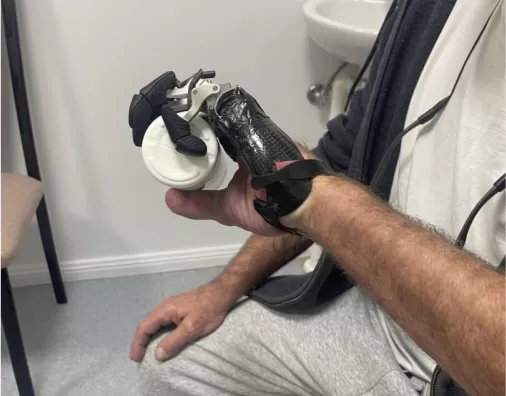
An upper limb prosthetic device (prosthesis) has the main purpose of replacing the rest of the limb, joints and hand following limb loss, or restoring the length of a congenital limb. The ideal outcome is a well-fitting prosthetic arm, that distributes pressures evenly, with the forces going through the limb and components optimally to enable improved mobility.
For every level of upper limb amputation or limb difference, there are options for passive, body powered, externally powered or a combination of prosthetic devices. Below we will explain a little bit about the different levels of amputation. Call to book with ForMotion team today at a branch nearest you to discuss your options.

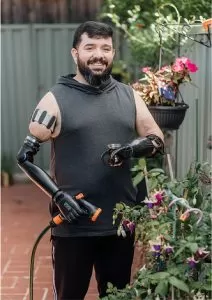
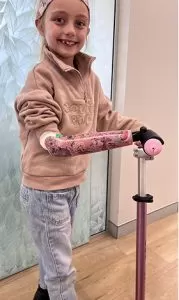
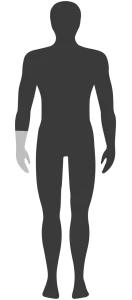 Trans-radial means cut through the radius (and ulna) bones of the forearm. This is how your doctors, physiotherapists and prosthetist will often
Trans-radial means cut through the radius (and ulna) bones of the forearm. This is how your doctors, physiotherapists and prosthetist will often
refer to a below elbow amputation or below elbow prosthesis.
The ability to pronate and supinate (rotate at the wrist) is lost in this level, however it is much easier to create a symmetrical length with the sound side arm.
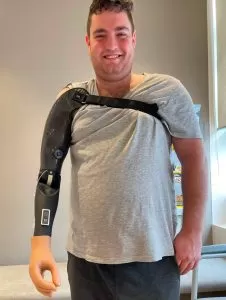
 Trans-humeral means cut through the humerus bone of the upper arm. Trans-humeral is what health professionals refer to an above elbow amputation or above elbow prosthesis as.
Trans-humeral means cut through the humerus bone of the upper arm. Trans-humeral is what health professionals refer to an above elbow amputation or above elbow prosthesis as.
Check out our resource outlining the benefits of a trans-humeral prosthesis.
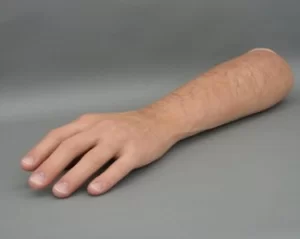
 Wrist disarticulation is an amputation through the wrist joint. No bones are cut in this surgery and the full length of the forearm is preserved.
Wrist disarticulation is an amputation through the wrist joint. No bones are cut in this surgery and the full length of the forearm is preserved.
The full-length forearm enables pronation and supination to be retained, minimising accommodations at the shoulder and also giving a longer lever for better control of the weight of a terminal device. Though you will almost inevitably have to compromise these benefits for additional length once a terminal device is added.
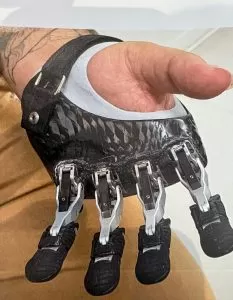
 Partial hand is an all-encompassing term for many presentations and amputation levels at the hand. Trans-carpal is one example, where the carpal bones (the long bones in the middle of your hand) have been cut.
Partial hand is an all-encompassing term for many presentations and amputation levels at the hand. Trans-carpal is one example, where the carpal bones (the long bones in the middle of your hand) have been cut.
There are more and more prosthetic options available for partial hand amputees, with custom silicone prosthetics, 3D printed devices, myoelectric prostheses and mechanical ratchet fingers that can be attached to the wrist or socket depending on level of amputation.
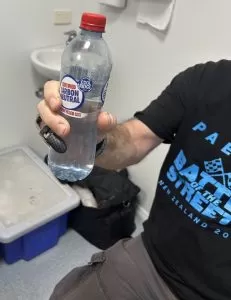
 Losing a finger or thumb can sometimes seem insignificant compared to more complex amputations, however the function that is lost from a single finger can have a big impact on functions in work, life and mental health. There are many options available that will help in the short term functionally and long term health benefits to using a digit. Whether you have lost one finger or all 5, APC will work with you to get a result that helps meet your functional and cosmetic needs.
Losing a finger or thumb can sometimes seem insignificant compared to more complex amputations, however the function that is lost from a single finger can have a big impact on functions in work, life and mental health. There are many options available that will help in the short term functionally and long term health benefits to using a digit. Whether you have lost one finger or all 5, APC will work with you to get a result that helps meet your functional and cosmetic needs.
There are more and more prosthetic options available digit amputees, with custom silicone fingers, 3D printed devices, myoelectric prostheses and mechanical ratchet fingers that can be attached to the wrist/finger or socket depending on how many digits are affected.
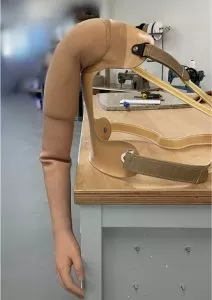
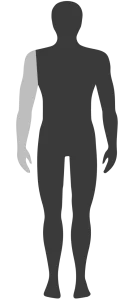 Shoulder disarticulation is an amputation through the shoulder joint. No bones are cut in this surgery and the shoulder girdle (clavicle & scapula) remain intact. If the shoulder girdle is also removed, this is called a forequarter amputation
Shoulder disarticulation is an amputation through the shoulder joint. No bones are cut in this surgery and the shoulder girdle (clavicle & scapula) remain intact. If the shoulder girdle is also removed, this is called a forequarter amputation
It may seem daunting seeking out a prosthetic arm for a shoulder disarticulation amputation. But our experienced clinicians at ForMotion Clinic will help you and work with your treating and care team to find a solution that you’re comfortable with.
